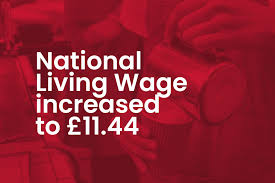Blue Monday is this year the 15th January 2024, i.e. today, so it’s a useful trigger to remind Managers to be far more aware of issues related to employee mental health.
Blue Monday, a concept coined in 2005, is considered the most depressing and challenging day of the year for mental wellbeing, attributed to factors such as gloomy weather, post-holiday blues, and financial strains. While it’s not scientifically proven, it symbolises a period where people may feel more down than usual and offers a timely reminder of the importance of supporting mental health in the workplace.
Why SMEs Need to Act
In a rapidly changing world, mental health has become a crucial aspect of employee welfare. According to 2023 survey findings from the CIPD, Mental Ill Health was the 3rd largest causes of short-term absence (39%) and was the leading reason (63%) for long-term sickness absence in those surveyed.
For SMEs, the impact of poor mental health and any associated sickness absence can be more pronounced, affecting productivity, employee engagement, and overall workplace morale. All of which will have an impact on the bottom-line.
Actionable Strategies for SMEs
For many Managers it can seem difficult to know where to start. The key is to do something, no matter how small, so here are some ways to kick start your business to a healthier 2024:
- Promote Open Communication: Create a culture where employees feel comfortable discussing their mental health. Create a safe space where employees feel comfortable sharing their concerns without fear of judgment or repercussions. This can be facilitated through team meetings, one-to-one check-ins, or anonymous employee surveys or informal feedback.
- Regular Check-ins: Make mental health check-ins a regular part of your Management protocol, and talk about wellbeing. A good introduction is to volunteer some information about how you are feeling first, as it shows some of your own vulnerability (and humanity), as then invites the employee in turn to put forward how they are feeling as well. This ensures continuous support and shows employees that you treat their wellbeing as a priority.
- Promote a Healthy Work Environment: Foster a positive work culture where achievements are recognised, and failures are seen as learning opportunities. Encourage regular breaks, provide a comfortable work setting, and ensure workloads are realistic and manageable.
- Flexible Working Options: Recognise the stressors of modern life and offer flexible working arrangements where possible. This can include flexible hours, the option to work from home, or compressed hours. Such measures can significantly reduce stress and improve work-life balance.
- Training and Resources: Provide training for Managers and Team Leaders on recognising signs of mental distress, and how to approach these conversations sensitively. You could also reach out and establish partnerships with local mental health organisations for support. Consider training and appointing a Mental Health First Aider in your workplace.
- Mental Health Education: Share information to your staff about mental health services available, such as counselling or employee assistance programmes. Organise workshops or seminars on mental health awareness. Knowledge and understanding can significantly reduce stigma and encourage employees to seek help when needed.
- Wellness Activities: Promote physical wellbeing as a way to enhance mental health. Initiatives could include organising group activities, or providing gym memberships at a discounted rate. Organise activities or provide resources that focus on mental health. This might include simple initiatives like a ‘walk and talk’ lunch break, that can make a real difference.
- Recognise and Reward: Acknowledge the efforts of your employees. A little recognition can go a long way in boosting morale and mental wellbeing.
- Personal Development Opportunities: Offer opportunities for personal and professional growth. Employees who feel they are developing their skills and careers are more likely to be engaged and have higher job satisfaction.
- Lead by Example: Leadership should openly prioritise their own mental health and wellbeing. When leaders model healthy work-life balance and self-care, it sets a positive tone for the entire organisation.
Conclusion
For SMEs, it’s essential to remember that the wellbeing of your employees directly impacts the health of your organisation.
During this week, consider taking one of the strategies mentioned in this article to support and promote positive mental health in your workplace. By taking proactive steps, not only can you support your employees through challenging times, but you can also foster a more positive, productive, and supportive workplace environment all year-round.
BackupHR Training
Getting the best from your team requires skill and dedication. Supporting wellbeing at work is just one way that Managers contribute towards the effectiveness of your staff.
Our Management Training Programme for 2024 covers a toolbox of strategies and essential practical skills, designed to equip those who are new to Management, or to offer further development or a refresher of existing skills for more experienced Managers.
Delivering Bad News: 7th February 2024 – Quy Mill Hotel & Spa, Quy, Cambridge
Core Skills for Managing People: 24th April 2024 – Park Farm Country Hotel, Hethersett, Norwich and 17th October 2024 – Quy Mill Hotel & Spa, Quy, Cambridge
Handling Difficult Situations; 21st November 2024 – Park Farm Country Hotel, Hethersett, Norwich
Contact Jackie today by e-mail: jackie@backuphr.com or 01480 677981 and visit www.backuphr.com for more information on how our training course can benefit you and how to book.
The guidance provided in this article is just that – guidance. Before taking any action, make sure that you know what you are doing, or call an expert for specific advice.











